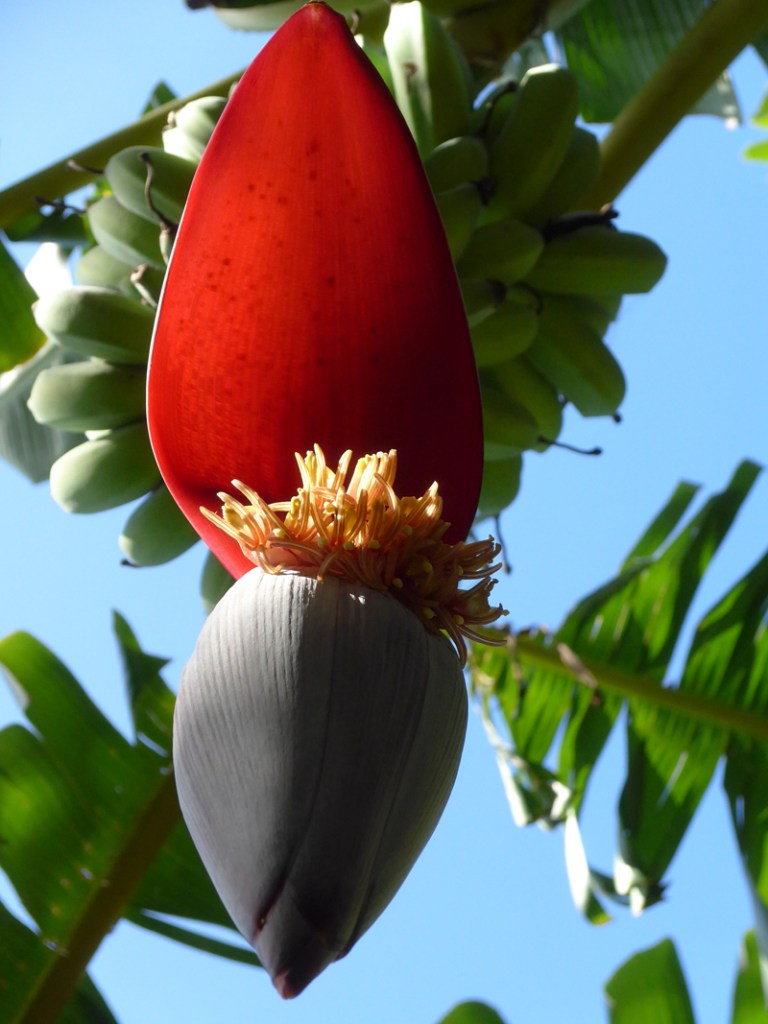Musa spp
Banana cultivars
I have been questioned as to which is the best cultivar of banana to grow in New Zealand. My thoughts and observations are that our Northland climate is borderline for growing bananas, and if we have a cold, wet winter, plants can get knocked back; however, it is surprising how quickly they bounce back as the summer temperatures rise. With our climates rising average temperature it will be a lot easier to succeed with those cultivars more suited to warmer temperatures.
The late Dr Phil Gardner, who lived up the Waikare Inlet in the Bay of Islands, has probably done the most evaluation on a wide range of cultivars. Over 12 years, he collected together 33 local and imported clones of known, named varieties, and tested them at his former property in Waikare. According to Phil, the Ladyfinger type (short, stubby fruit with thin skin) gave the best results. Hamoa and Australian Ladyfinger were two he regarded highly. My own observations are that there are several Ladyfinger banana cultivars around which have differing flavours, but most people don’t know their names. When you see a plant growing well if possible try a fruit to see if you like that flavour, then get a young sucker from that plant. Suckers are best planted at the beginning of the warm months to make sure they are well established by the cold, wet months.
Cavendish type plants are generally dwarf growing but they are very “cold/wet” sensitive and very few places can get them to fruit well. A useful distinguishing point is that they usually exhibit splotched brown markings on the younger leaves which disappears as the “palm” matures.
Bananas respond particularly well to heavy mulching, producing strong palms with big bunches. (The best I have seen weighed nearly 30kgs.) They strongly resent having wet ‘feet’ in the winter time, but they do like lots of water in the summer, so make sure they are planted in a free draining area, in as warm a situation as possible preferably protected from the wind. Now get to it and grow yourself a bunch.
There are several ornamental species available, the hardiest being Musa velutina which has upright pink flowers followed by upright pink skinned bananas that are full of seed. The most spectacular is Musa coccinea which has brilliant orange-red flowers. This plant seldom sets fruit but when it does it also contains seeds. As birds consume these fruits and distribute the seed, in time these plants could become weeds with climate change.

